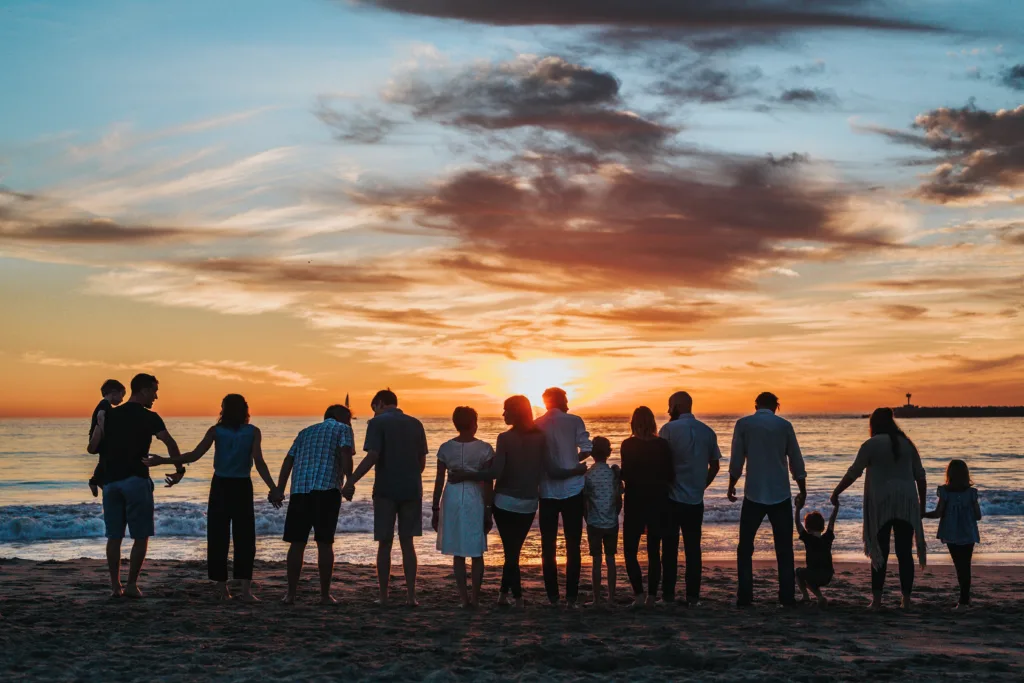High school reunions are highly anticipated events that bring former classmates together to reminisce and reconnect. These gatherings are typically organized by one or more class members and are often held near the anniversary of their graduation. While there is no hard and fast rule regarding the timing of high school reunions, summer is often the most popular time for these events, especially for classes with classmates of child-rearing age.
Many class reunions occur around milestone anniversaries such as the 10th, 20th, or 30th year mark. However, odd-numbered years can also work well for scheduling these gatherings. The purpose of a class reunion is to provide an opportunity for former classmates to come together and catch up on each other’s lives, share memories, and reignite friendships that may have faded over time.
Traditionally, high school reunions are held at or near the school where the classmates spent their formative years. This location provides a sense of nostalgia and familiarity, allowing participants to relive their high school experiences and reminisce about their shared memories. However, some reunions may be organized in alternate venues such as banquet halls, hotels, or even outdoor spaces, depending on the preferences of the class organizers and the size of the reunion.
The responsibility for planning a high school reunion often falls on the class president and other class officers. However, it is not uncommon for other classmates to take the lead if the class president is unavailable or uninterested in organizing the event. Planning a successful reunion involves various tasks, including finding a suitable venue, coordinating dates that work for the majority of attendees, managing invitations and registrations, and organizing activities and entertainment.
The timing of high school reunions in the summer is advantageous for several reasons. Firstly, the summer season offers better weather conditions, allowing for outdoor activities and increasing the chances of a successful and enjoyable gathering. Additionally, summer vacations and school breaks make it easier for classmates to attend without conflicting with work or other commitments. Those with children are more likely to have flexibility during the summer, as it aligns with their children’s school vacations.
High school reunions are not only a chance to reconnect with old friends but also an opportunity for personal growth and reflection. They allow individuals to see how far they have come since their high school days and to celebrate their achievements. Reunions often spark a sense of nostalgia and can be incredibly emotional, as they provide a chance to honor and remember those classmates who have passed away.
High school reunions are special events that bring former classmates together to celebrate their shared experiences and rekindle friendships. While there are no set rules for when to schedule these reunions, summer tends to be the most popular time due to favorable weather and increased availability of attendees. Whether it’s a 10-year, 20-year, or 30-year reunion, these gatherings create lasting memories and offer a chance for personal growth and reflection.
What Month Are Most High School Reunions?
Most high school reunions are typically held during the summer months, particularly in the 10th, 20th, and 30th years after graduation. This is mainly due to several factors that make summer the ideal time for classmates, especially those in their child-rearing age, to attend and participate in reunions. Here are a few reasons why summer is the preferred month for most high school reunions:
1. Convenience: Summer offers a break from school and work schedules, making it easier for attendees to plan their trips and take time off. It allows classmates who may have moved away or have busy lives to have a higher chance of attending the reunion.
2. Weather: Summer typically provides pleasant weather, which allows for outdoor activities and socializing. This makes it more enjoyable for classmates to gather and catch up on each other’s lives.
3. Vacation Time: Many people take vacations during the summer months, making it easier for them to travel and attend reunions. By scheduling during this time, organizers increase the likelihood of a larger turnout.
4. Family-Friendly: Summer is often a time when families plan vacations or outings, which means classmates can bring their families along to the reunion. This makes it a more inclusive event and allows for the opportunity to introduce families to each other.
5. School Break: For those classmates who work in the education sector, summer break aligns with their available time off. This makes it more convenient for teachers, administrators, and other school staff to attend the reunion.
6. Anniversary Milestones: The 10th, 20th, and 30th years after graduation are significant milestones for high school reunions. These particular reunions tend to draw a larger number of attendees, and scheduling them during the summer ensures maximum participation.
To summarize, high school reunions are most commonly held during the summer months. This choice allows for greater convenience, favorable weather conditions, increased availability of vacation time, the inclusion of families, alignment with school breaks, and the celebration of significant reunion milestones.

What Years Do High School Reunions Happen?
High school reunions typically occur around milestone anniversaries or at specific intervals. The most common milestone anniversaries for high school reunions include the 10-year, 20-year, and 30-year marks. However, it is also common for reunions to take place in odd-numbered years, such as the 15-year or 25-year mark.
High school reunions primarily occur on milestone anniversaries like the 10-year, 20-year, and 30-year marks, but odd-numbered years can also be chosen for these gatherings.
How Often Do High School Reunions Happen?
High school reunions typically occur every 5 or 10 years, depending on the preferences of the class members. These gatherings serve as a means for former classmates to reconnect and reminisce about their shared experiences during their time in high school. The frequency of these reunions allows for a significant amount of time to pass between each gathering, ensuring that there is ample opportunity for classmates to pursue their individual paths after graduation before coming together again.
It is common for the first high school reunion to take place approximately five years after graduation. This initial gathering allows classmates to catch up on each other’s lives and share stories of their early experiences in the real world. It provides an opportunity to see how everyone has grown and changed since their high school days.
Following the first reunion, subsequent gatherings commonly occur every ten years. This extended interval allows for a more substantial period of time to elapse, giving classmates the chance to achieve significant milestones in their personal and professional lives. By waiting a decade between reunions, attendees have more to share and celebrate, as they have had more time to establish themselves in their careers, start families, and embark on various life adventures.
The decision of whether to have a reunion every 5 or 10 years depends on the preferences of the class members and the level of organization and interest within the class. Some classes may opt for more frequent reunions to maintain stronger connections, while others may prefer the longer gap to make each gathering more special and momentous.
High school reunions typically occur every 5 or 10 years, providing classmates with the opportunity to reconnect, reminisce, and celebrate their shared experiences. The frequency of these reunions allows for classmates to pursue their individual paths before coming together again, ensuring that each gathering is meaningful and reflective of the growth and achievements of the entire class.
Who Organizes 10-year High School Reunion?
The responsibility of organizing a 10-year high school reunion typically falls on the class president or class officers. However, it is not a strict requirement that it must be one of them. In some cases, the class president may have relocated to a distant location or may simply have little interest in coordinating the event. In such situations, other class members or a reunion committee may step up to take on the task of organizing the reunion.
Here are some key points about who typically organizes a 10-year high school reunion:
1. Class President: The class president is often considered the natural choice for organizing the reunion. As a representative of the class, the president is expected to take the lead in planning and coordinating the event. However, their involvement depends on their availability, willingness, and commitment to the task.
2. Class Officers: Alongside the class president, other class officers such as vice president, secretary, or treasurer may also be involved in organizing the reunion. These individuals often work together as a team to ensure a successful reunion.
3. Reunion Committee: If the class president or officers are unable or unwilling to take charge, a reunion committee can be formed. This committee consists of interested and motivated class members who volunteer their time and effort to plan and execute the reunion. The committee can be formed through word-of-mouth, social media groups, or by reaching out to classmates individually.
4. Classmates: In some cases, classmates themselves may take the initiative to organize the reunion. This can happen when there is no active class president or officers, or if the reunion is being planned independently of the official class leadership. In such situations, interested classmates can come together, form a committee, and collectively handle the responsibilities of organizing the event.
It is important to note that the specific dynamics and traditions of each high school may vary. Some schools may have more structured systems in place for organizing reunions, while others may rely heavily on the enthusiasm and initiative of individual classmates. Therefore, it is advisable to reach out to former classmates, connect through social media platforms, or contact the high school administration to gather information about the organizing process for a 10-year high school reunion.

Conclusion
High school reunions are important events that bring former classmates together to reminisce, reconnect, and celebrate their shared experiences. These reunions are typically organized around milestone anniversaries such as the 10th, 20th, or 30th year mark since graduation. Summer is often the preferred time for these gatherings, as it allows classmates who are of child-rearing age to attend without the constraints of the school year.
The responsibility of planning a high school reunion usually falls on the class president or officers, but anyone can take the initiative to organize the event. It is essential to consider the preferences and availability of the classmates, as well as choose a venue that holds sentimental value, such as the former high school or a nearby location.
High school reunions provide an opportunity for classmates to catch up and see how everyone has grown and changed over the years. It allows for the rekindling of old friendships and the chance to make new connections. These events often include activities such as dinner, dancing, games, and sharing memories. They can also serve as a platform for networking and professional opportunities, as classmates may have pursued diverse careers and experiences.
Attending a high school reunion can evoke a range of emotions, from excitement and anticipation to nostalgia and reflection. It is a chance to celebrate achievements, reminisce about shared experiences, and honor the bonds formed during those formative years.
High school reunions are valuable and memorable occasions that offer a unique opportunity for classmates to come together, rekindle old connections, and create new ones. They serve as a testament to the enduring friendships and shared memories that were cultivated during those pivotal years in our lives.
